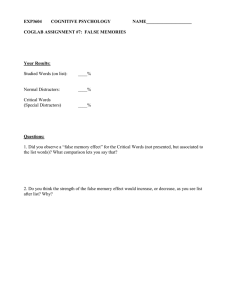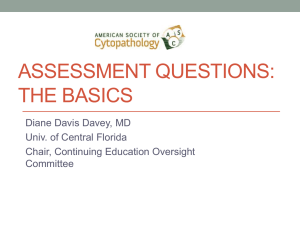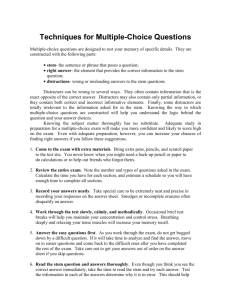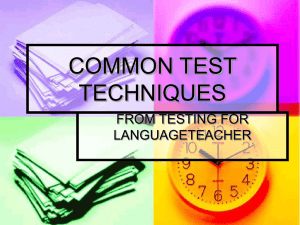The measurement of the salience of targets and distractors through
advertisement
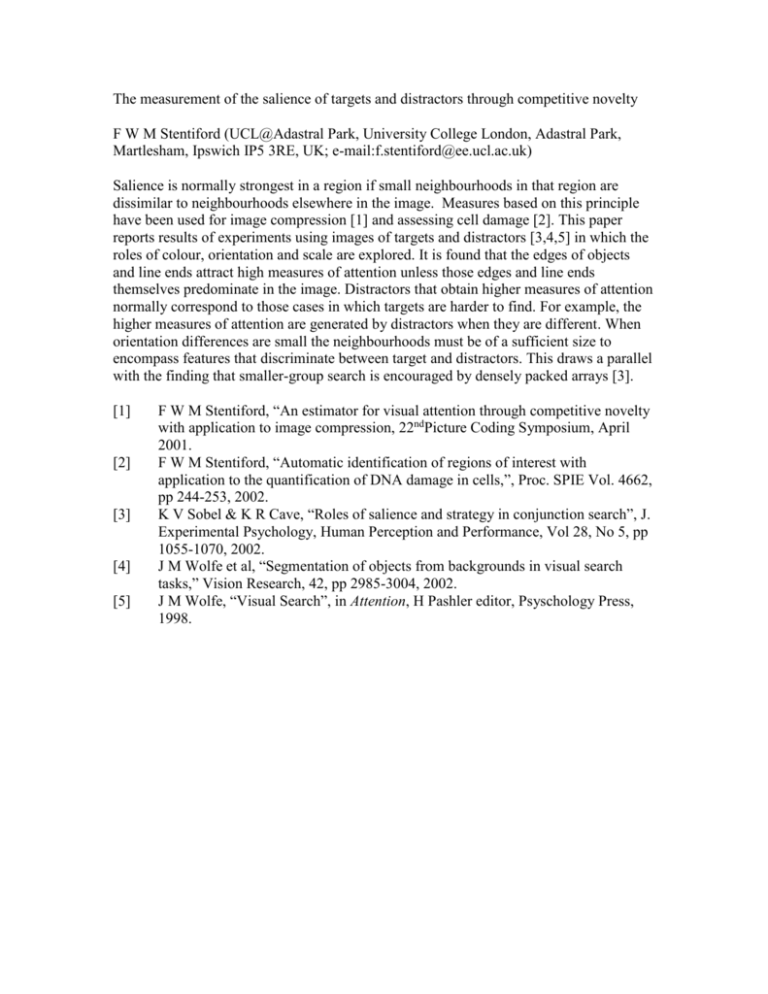
The measurement of the salience of targets and distractors through competitive novelty F W M Stentiford (UCL@Adastral Park, University College London, Adastral Park, Martlesham, Ipswich IP5 3RE, UK; e-mail:f.stentiford@ee.ucl.ac.uk) Salience is normally strongest in a region if small neighbourhoods in that region are dissimilar to neighbourhoods elsewhere in the image. Measures based on this principle have been used for image compression [1] and assessing cell damage [2]. This paper reports results of experiments using images of targets and distractors [3,4,5] in which the roles of colour, orientation and scale are explored. It is found that the edges of objects and line ends attract high measures of attention unless those edges and line ends themselves predominate in the image. Distractors that obtain higher measures of attention normally correspond to those cases in which targets are harder to find. For example, the higher measures of attention are generated by distractors when they are different. When orientation differences are small the neighbourhoods must be of a sufficient size to encompass features that discriminate between target and distractors. This draws a parallel with the finding that smaller-group search is encouraged by densely packed arrays [3]. [1] [2] [3] [4] [5] F W M Stentiford, “An estimator for visual attention through competitive novelty with application to image compression, 22ndPicture Coding Symposium, April 2001. F W M Stentiford, “Automatic identification of regions of interest with application to the quantification of DNA damage in cells,”, Proc. SPIE Vol. 4662, pp 244-253, 2002. K V Sobel & K R Cave, “Roles of salience and strategy in conjunction search”, J. Experimental Psychology, Human Perception and Performance, Vol 28, No 5, pp 1055-1070, 2002. J M Wolfe et al, “Segmentation of objects from backgrounds in visual search tasks,” Vision Research, 42, pp 2985-3004, 2002. J M Wolfe, “Visual Search”, in Attention, H Pashler editor, Psyschology Press, 1998.
